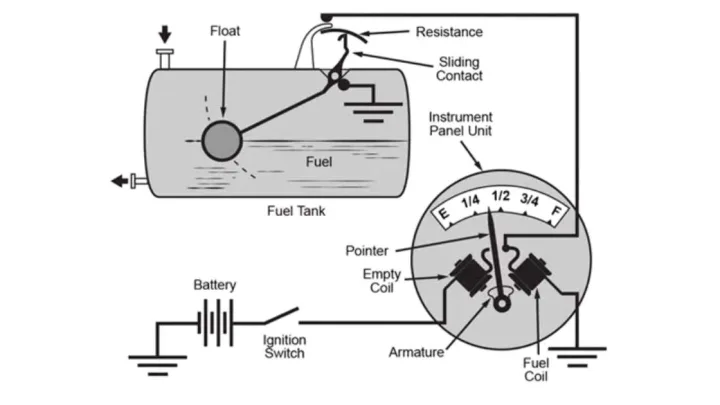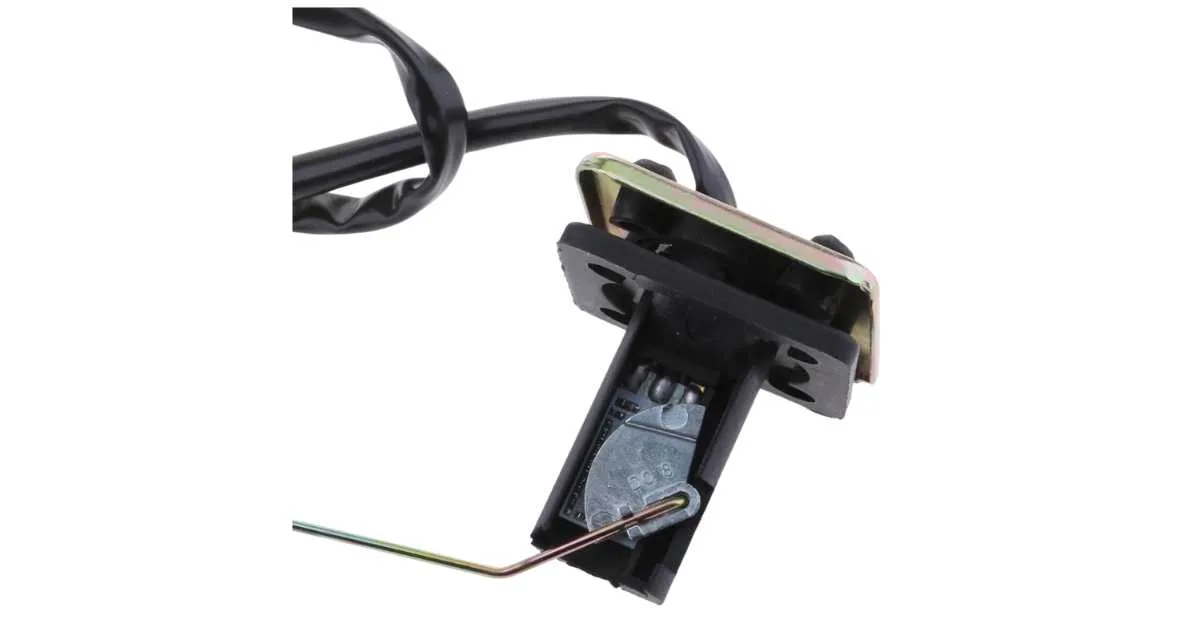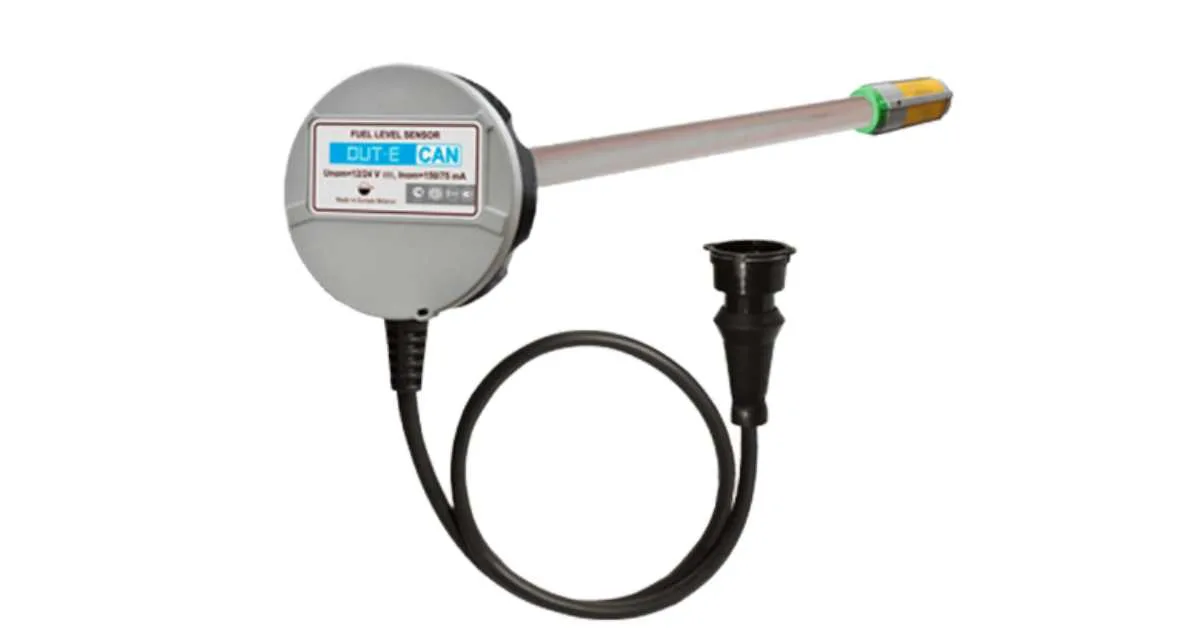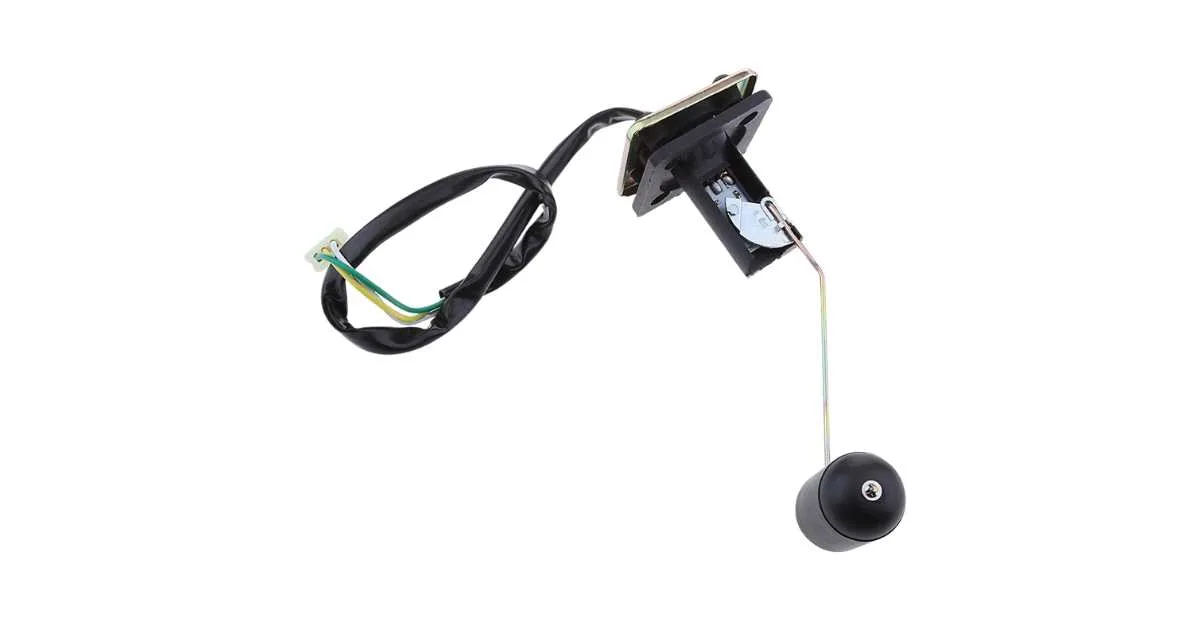
A fuel level sensor is crucial for monitoring how much gas is in your tank. It ensures you don't run out unexpectedly.
Imagine driving without knowing how much fuel you have left; that’s where the fuel level sensor comes in. It's a small device with a big job: to accurately keep track of your fuel. But like any part of a vehicle, it can fail.
What leads to such a failure, you might ask? Your car's health depends on functioning parts, and the fuel level sensor is no exception. Over time, this sensor faces various challenges that may impair its performance. Factors like fuel quality, wear and tear, and even environmental conditions play a role. A faulty sensor can lead to inaccurate fuel readings, potentially leaving you stranded. This introduction will explore common reasons these sensors fail and signs to watch for. Simple maintenance tips can help you avoid sudden sensor issues. Let's dive into the details and help you maintain a reliable read on your fuel situation.
 Common Causes Of Sensor Malfunction
Common Causes Of Sensor Malfunction
 Poor Quality Components And Manufacturing Defects
Poor Quality Components And Manufacturing Defects
 Technological Advances And Sensor Reliability
Technological Advances And Sensor Reliability
Introduction To Fuel Level Sensor Failures
Ever wonder why your car's fuel gauge acts up? It's often a faulty fuel level sensor. This small device plays a big role in your car. It tells you how much gas you have. But when it goes bad, it can cause trouble. Let's dive into the world of fuel level sensors and see what happens when they fail.The Role Of A Fuel Level Sensor
A fuel level sensor keeps an eye on your gas tank. It's a key part of your car's fuel system. This sensor sends data to your car's computer and fuel gauge. It helps you know when to fill up. Without it, you could be left guessing. Or worse, stranded with an empty tank.Signs Of A Malfunctioning Sensor
Is your fuel gauge acting weird? Does it show full one minute and empty the next? These are signs your sensor might be failing. You might also see the check engine light. Or your car might not start. If you see these signs, it's time to check your fuel sensor. Common Causes Of Sensor Malfunction
Common Causes Of Sensor Malfunction
Common Causes Of Sensor Malfunction
Understanding why fuel level sensors fail is crucial. Let’s dive into common issues.Fuel Contamination And Corrosion
Dirt and water in fuel cause big problems. They make sensors dirty. This leads to wrong fuel readings. Over time, this dirt can cause corrosion. Corrosion damages the sensor. Then, the sensor stops working right.Electrical Issues And Wiring Problems
Wires connect the sensor to the car's system. Sometimes, these wires get damaged. Cuts, wear, and loose connections are common. These issues stop the sensor from sending correct data. No right data, no correct fuel level reading.Effects Of Temperature Variations
Temperature changes can wreak havoc on a fuel level sensor. Extreme heat or cold can cause components to expand or contract, leading to sensor failure. Effects of temperature variations can impact your vehicle's fuel level sensor. This critical component measures how much fuel remains in the tank. But, extreme hot or cold temperatures can cause issues. Let's explore how these conditions affect the sensor.Thermal Expansion And Sensor Distortion
Heat can cause materials to expand. This is true for fuel level sensors too. Made mostly of metal, the sensor can change shape in high temperatures. This warping may lead to incorrect fuel readings. Imagine a hot day causing the sensor to expand. Your fuel gauge might show a full tank when it's not. This can be frustrating and misleading, risking you getting stranded with no fuel.Cold Weather And Sensor Responsiveness
Cold temperatures can be just as problematic. Sensors can become sluggish when it's cold. They might not move as they should. This means your fuel gauge might not update quickly or at all. You might start your day with a half tank. But the sensor's slow response could fail to show the actual drop in fuel as you drive. This can be dangerous, especially in remote areas without many gas stations. Temperature swings are tough on fuel sensors. Knowing how they affect the sensor helps you understand your fuel gauge. Stay aware and keep your tank well-filled. This way, you reduce the risk of running out of fuel.Wear And Tear Over Time
Wear and Tear Over Time affects many car parts, including the fuel level sensor. This sensor's main role is to gauge how much fuel is in the tank, sending this data to the car's computer system. Over time, several factors can cause it to fail. Let's explore these in detail.Age-related Degradation
Like all car parts, fuel level sensors suffer from age-related wear. Components inside can corrode or wear down, leading to inaccurate readings or total failure. Older vehicles are more likely to encounter such issues with their fuel level sensors.The Impact Of Frequent Fuel Level Changes
Frequent changes in the tank's fuel level can strain the sensor. This is because the sensor has to constantly adjust to new readings, which can cause premature wear. Vehicles that experience regular fuel level fluctuations might see sensors fail sooner. Poor Quality Components And Manufacturing Defects
Poor Quality Components And Manufacturing Defects
Poor Quality Components And Manufacturing Defects
Let's talk about poor quality components and manufacturing defects. These issues often lead to bad fuel level sensors. Why? Let's dive in.Substandard Materials
Companies sometimes use cheap materials. This saves them money. But, it's bad news for the sensor's quality. Cheap materials can break or wear out fast. This means the sensor won't last long.- Plastic parts may crack.
- Metals can corrode.
- Wires might break.
Factory Errors And Recalls
Mistakes happen during manufacturing. These factory errors can make sensors fail. Companies sometimes recall products. This means they take back bad sensors. They fix them or give better ones.- Assembly mistakes.
- Wrong parts used.
- Testing skipped.
Installation And Maintenance Errors
Fuel level sensors must be installed with care. A mistake here can lead to early failure. Proper maintenance is key to keep them working right. Let's explore common errors that can damage these sensors.Improper Sensor Placement
Correct sensor placement is crucial. If placed wrong, the sensor can give false readings. This misplacement can also cause physical damage to the sensor. It's a simple yet vital step for accurate fuel level measurement.Lack Of Regular Checks And Balancing
Sensors need regular checks. Without them, small issues can grow into big problems. Balancing and calibration are part of these checks. They ensure the sensor reads fuel levels correctly. Skipping this can mean trouble for the sensor.Fuel Additives And Their Impact On Sensors
Fuel additives can affect your car's fuel sensor. Let's see how.Chemical Reactions With Additives
Fuel additives mix with fuel. Sometimes, this mix causes chemical reactions. These reactions can harm the fuel level sensor. The sensor measures how much fuel your car has. If damaged, it gives wrong information. This could lead to unexpected car stops because the fuel gauge shows incorrect levels.The Risks Of Non-compatible Additives
- Not all additives are safe for your car.
- Some can damage the sensor.
- Wrong additives might lead to costly repairs.
 Technological Advances And Sensor Reliability
Technological Advances And Sensor Reliability
Technological Advances And Sensor Reliability
Vehicle technology moves fast, and so do parts like fuel level sensors. They tell how much fuel is in the tank. Good sensors mean better fuel tracking. But even with tech advances, sensors can fail. Let's explore how new tech helps and what's coming next.Innovations In Sensor Technology
Fuel level sensors have come a long way. They now use better materials. These resist fuel corrosion and last longer. Smart sensors communicate with onboard computers. This means more accurate fuel readings. With fewer moving parts, they wear out less often.Future Trends In Fuel Monitoring Systems
Expect even smarter fuel systems soon. They will use data to predict fuel needs. This will save money and reduce breakdowns. Wireless technology will make installation easier. Sensors will self-check and alert for problems. These trends aim for more reliable fuel management.Troubleshooting And Diagnosing Sensor Issues
Let's dive into troubleshooting and diagnosing sensor issues. A failing fuel level sensor can leave you guessing about your tank's content. To avoid this, understanding how to test and diagnose a faulty sensor is key. Simple steps can guide you through this process. Knowing when to call a professional is also crucial. Let's start with how to test the sensor yourself.Step-by-step Sensor Testing
Testing a fuel level sensor starts with safety. Park your car and turn it off. Next, locate your sensor, usually attached to the fuel pump. You'll need a multimeter to check the sensor's resistance. Connect the multimeter probes to the sensor terminals. A good sensor will show a resistance change as the float moves. If the resistance stays the same, it's time for a new sensor.Professional Vs. Diy Diagnostics
DIY diagnostics can save you money. With a guide and basic tools, you can test the sensor. But, remember, professionals have advanced tools. They can pinpoint issues beyond the sensor. For complex problems, seeking a mechanic's help is wise. They can ensure your car runs smoothly and your fuel gauge is accurate.Preventive Measures And Best Practices
Keeping your fuel level sensor in good shape is crucial. It tells you how much fuel you have. To avoid issues, follow these steps. Your car will thank you.Regular Vehicle Maintenance Tips
Regular checks keep your car running well. Make it a habit to inspect your fuel system. This includes the fuel level sensor. Look for wiring problems and corrosion. Clean parts often. Replace parts that look worn out. Stick to your car's service schedule. This helps catch issues early.Choosing Quality Fuel And Additives
Use the right fuel for your car. Cheap fuel can cause deposits. These deposits can harm the sensor. Use additives if needed. They clean the fuel system. This can help prevent sensor problems. Choose additives meant for your vehicle. Follow the instructions on the label.Conclusion: Enhancing Sensor Longevity
Maintaining your fuel level sensor is vital for car health. Simple steps can prevent sensor failure. Proper care ensures accurate fuel readings and avoids unexpected breakdowns.Summarizing Key Takeaways
Avoiding contamination is crucial. Clean fuel matters. Regular check-ups catch issues early. Sensor lifespan extends with these practices. Remember, quality fuel keeps sensors clean.Final Thoughts On Sensor Care
Good habits lead to longer sensor life. Stay on top of maintenance schedules. Your vehicle will thank you with reliable performance. Treat sensors well to enjoy a smooth drive. Credit: www.agcoauto.comFrequently Asked Questions
What Are Common Signs Of A Failing Fuel Level Sensor?
A failing fuel level sensor often results in inaccurate fuel gauge readings, where the gauge might stick at a certain point or fluctuate wildly. Drivers might also notice their fuel light coming on unexpectedly, signaling that the sensor is not accurately detecting fuel levels.How Does A Bad Fuel Level Sensor Affect Driving?
A bad fuel level sensor can lead to uncertainty about the amount of fuel in the tank, potentially causing drivers to run out of gas unexpectedly. It may also affect the vehicle's fuel efficiency monitoring, making it hard to track fuel consumption accurately.Can A Fuel Level Sensor Be Repaired Or Must It Be Replaced?
In most cases, a fuel level sensor needs to be replaced rather than repaired. Some sensors might be cleaned as a temporary fix, but replacement is usually the most reliable solution to ensure accurate fuel level readings and prevent future issues.What Factors Contribute To Fuel Level Sensor Failure?
Fuel level sensor failure can result from several factors, including fuel contamination, wear and tear over time, and exposure to extreme temperatures. Corrosion due to water in the fuel tank can also damage the sensor, leading to malfunction.Conclusion
Understanding the reasons behind a failing fuel level sensor is crucial. Regular wear and tear often lead to its deterioration. Fuel contamination can also cause sensor issues. It's essential to spot signs of a faulty sensor early. Quick action can save you from unexpected vehicle troubles. Proper maintenance is key to extending the life of your fuel sensor. Keep these tips in mind to ensure your car runs smoothly. Always consult with a professional for sensor problems. Safe driving starts with a well-maintained vehicle. Remember, a reliable fuel sensor means a more dependable ride.Disclosure
Some links may be affiliate links. That means we may earn a small commission at no extra cost to you.